Last Updated on: 18th April 2024, 05:36 am
In the United Kingdom, self-employed individuals have unique tax obligations compared to employees. Understanding the self-employed tax code is crucial for complying with HMRC regulations and accurately calculating tax dues. In this comprehensive guide, we will explain what the self-employed tax code is and provide essential information for self-employed individuals in the UK.
When it comes to taxes, self-employed individuals need to navigate through different rulesand regulations. While they don’t have a specific tax code for their self-employment income, they need to manage their taxes through the Self Assessment system. This system requires self-employed individuals to calculate their tax liability using the Self Assessment tax return and online calculators available.
If you are self-employed and wondering how to register for Self Assessment with HMRC, we have got you covered. Registering for Self Assessment is crucial to fulfill your tax responsibilities. Upon registration, you will receive a unique taxpayer reference (UTR) that serves as your personal identifier for tax purposes. It is important to note that self-employed individuals do not receive a specific tax code for their self-employment income.
While self-employed individuals do not have a specific tax code for their self-employment income, they may have tax codes for other sources of income, such as employment or pensions. These tax codes indicate the amount of tax-free earnings and provide context about the individual’s tax situation. Understanding these tax codes is crucial for self-employed individuals to assess their overall tax obligations accurately.
Self-employed individuals are subject to different tax rates and allowances compared to employees. The Personal Allowance, which represents tax-free earnings, determines the threshold at which individuals need to start paying taxes. Staying updated with the current tax rates and allowances is essential for self-employed individuals to ensure accurate tax calculations.
As a self-employed individual, you don’t have a specific tax code for your self-employment income. However, it is important to regularly check your tax codes for any additional sources of income, such as employment or pensions. You can find your tax codes on P45, payslips, or through online platforms like the HMRC app or your personal tax account. If you believe your tax code is incorrect, you can challenge it with HMRC.
Common mistakes and errors can occur when it comes to self-employed tax codes. These can include incorrect tax codes for additional sources of income, outdated tax codes, or errors in tax calculations. Ensuring that your tax codes are up to date and accurate is essential to avoid any issues or penalties.
Maximizing tax savings is a priority for self-employed individuals. By claiming allowable expenses, utilizing tax reliefs and allowances, and maintaining thorough records of income and expenses, self-employed individuals can reduce their tax liability. Seeking advice from a tax professional or using online tax tools and calculators can be beneficial in maximizing tax savings.
Self-employed individuals are responsible for calculating and paying their taxes through the Self Assessment system. Keeping accurate records of income, expenses, and invoices throughout the year is crucial. By completing the Self Assessment tax returns on time and paying taxes based on the calculations provided by HMRC, self-employed individuals can fulfill their tax obligations. Consultation with a tax professional or the use of online tax tools can ensure accurate calculations and timely payments.
What is the Self Employed Tax Code?
Unlike employees who receive tax codes, self-employed individuals do not have a specific tax code for their self-employment income. Instead, they manage their taxes through the Self Assessment system. A unique taxpayer reference (UTR) is assigned to self-employed individuals when they register with HMRC for Self Assessment. This UTR serves as their personal reference for tax purposes. Self-employed individuals can calculate their tax liability using the Self Assessment tax return and online calculators available.
Understanding the self employed tax code is crucial when it comes to managing your taxes as a self-employed individual in the UK. While employees have specific tax codes assigned to them, self-employed individuals work under the Self Assessment system. This means that self-employed individuals do not have a specific tax code for their self-employment income.
Instead, self-employed individuals are assigned a unique taxpayer reference (UTR) when they register with HMRC for Self Assessment. This UTR serves as their personal identification for tax purposes and is used to track their self-employment income and liabilities.
To calculate their tax liability, self-employed individuals can use the Self Assessment tax return. This tax return provides a detailed breakdown of their income, expenses, and allowances, allowing them to determine the amount of tax they owe.
In addition to the Self Assessment tax return, self-employed individuals can also utilize online tax calculators. These calculators provide a simplified way to estimate their tax liability based on their income and other relevant information.
By understanding the self-employed tax code and utilizing the Self Assessment system and online calculators, self-employed individuals can ensure compliance with HMRC regulations and accurately calculate their tax dues.
In the next section, we will discuss how to register for Self Assessment with HMRC, including the process of obtaining a UTR and the necessary steps to fulfill your tax obligations as a self-employed individual.
How to Register for Self-assessment With HMRC?
Registering for Self Assessment with HMRC is a crucial step for self-employed individuals in fulfilling their tax responsibilities. By doing so, individuals will receive a unique taxpayer reference (UTR) that serves as their identification for tax purposes. While self-employed individuals do not receive a specific tax code for their self-employment income, the UTR plays a significant role in their tax obligations.
To register for Self Assessment with HMRC, follow these steps:
- Visit the HMRC website or use the HMRC app to start your registration process.
- Provide the necessary personal and business information, including your name, address, business details, and contact information.
- Ensure you have accurate records of your self-employment income and expenses for the tax year.
- Obtain your UTR after successfully registering for Self Assessment.
Once you have received your UTR, you can use it as your unique identifier for all self-employed tax-related matters. Remember that the UTR is not a specific tax code for your self-employment income, as self-employed individuals do not receive a dedicated tax code.
Registering for Self Assessment is a crucial step towards meeting your tax obligations as a self-employed individual. It allows you to accurately report your income, claim deductions, and pay the appropriate amount of tax. Ensure that you complete your Self Assessment tax returns on time and keep your tax records up to date to stay compliant with HMRC regulations.
Here’s an informative guide to illustrate the registration process:
| Step | Description |
| Step 1 | Visit the HMRC website or use the HMRC app |
| Step 2 | Provide your personal and business information |
| Step 3 | Maintain accurate records of your income and expenses |
| Step 4 | Receive your UTR after successful registration |

Different Types of Tax Codes for Self Employed Individuals
While self-employed individuals do not have a specific tax code for their self-employment income, they may have tax codes for other sources of income, such as employment or pensions. These tax codes indicate the amount of tax-free earnings and provide context about the individual’s tax situation. It is crucial for self-employed individuals to understand any tax codes related to their additional sources of income.
1. Tax Codes for Other Sources of Income
In addition to their self-employment income, self-employed individuals may have tax codes that apply to their employment or pension income. These tax codes are used to calculate the amount of tax-free earnings for these specific sources.
For example, if a self-employed individual also works part-time as an employee, they will have a tax code based on their employment income. This tax code determines the amount of tax-free earnings they can have from their employment before they start paying taxes. Similarly, if they receive a pension, they will have a separate tax code for their pension income.
Understanding these tax codes is essential as they affect the overall tax liability. It’s necessary to ensure that the tax codes are accurate and up to date for each source of income.
2. Correctly Applying Tax Codes
When calculating their taxes, self-employed individuals need to apply the appropriate tax codes for each income source. This ensures that the correct amount of tax-free earnings is considered, and the taxable income is accurately determined.
It is recommended to review all tax codes associated with the different sources of income regularly and update them as needed. This can be done by contacting HMRC directly or updating the information through their online platforms.
3. Seeking Professional Advice
Tax codes can be complex, especially when multiple income sources are involved. Self-employed individuals may find it beneficial to seek professional advice from accountants or tax advisors to ensure that they are correctly applying their tax codes and maximizing their tax benefits.
By understanding and managing the different tax codes for their various sources of income, self-employed individuals can stay compliant with tax regulations and optimize their overall tax situation.

| Income Source | Tax Code | Tax-Free Earnings |
| Self-Employment | N/A | N/A |
| Employment | 1250L | £12,500 |
| Pension | BR | N/A |
Different Tax Rates and Allowances for Self-employed Individuals
When it comes to self-employment, understanding the different tax rates and allowances is crucial for accurate tax calculations. Self-employed individuals in the UK are subject to unique tax obligations, distinct from those of employees.
One important factor to consider is the Personal Allowance. This refers to the amount of tax-free earnings an individual is entitled to before starting to pay taxes. The Personal Allowance may vary from year to year, and staying updated with the current rates ensures that self-employed individuals can accurately calculate their tax dues.
Tax Rates for Self-employed Individuals
Self-employed individuals are subject to different tax rates compared to employees. The tax rates for self-employment income in the UK are as follows:
| Tax Band | Tax Rate |
| Basic Rate | 20% |
| Higher Rate | 40% |
| Additional Rate | 45% |
It’s important to note that these tax rates apply to different income brackets. The specific rate that self-employed individuals fall into depends on their total taxable income.
Understanding Allowances for Self-employed Individuals
In addition to tax rates, self-employed individuals can make use of various allowances to reduce their taxable income. Some common allowances include:
- Annual Investment Allowance: Allows deductions for certain investments made by the individual’s business.
- Capital Allowances: Provides tax relief on the purchase of business assets, such as equipment or vehicles.
- Trading Allowance: Allows self-employed individuals to deduct up to a certain limit for specific business expenses without the need for detailed record keeping.
By taking advantage of these allowances, self-employed individuals can minimize their tax liability and maximize their savings.
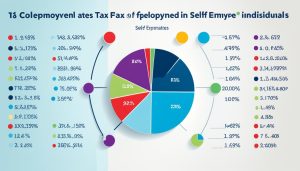
It’s important for self-employed individuals to consult with a tax professional or use online resources to ensure they are up to date with the latest tax rates and allowances. By staying informed and making full use of available tax benefits, self-employed individuals can effectively manage their tax obligations and optimize their financial situation.
How to Check and Update Your Tax Code as a Self Employed Individual?
As a self employed individual, it’s important to stay informed about your tax codes and ensure they reflect any additional sources of income you may have. Although there isn’t a specific tax code for self-employment income, checking your tax codes for other sources such as employment or pensions is essential. This ensures that your tax obligations are accurate and up to date.
There are a few ways you can check your tax codes:
- Review your P45: If you’ve recently left employment, you may have received a P45 form. This document contains important tax information, including your tax code. Take the time to carefully check the details and make sure they align with your employment history.
- Look at your payslips: If you’re currently employed, your payslips should display your tax code. Double-check that it matches the tax code provided on your P45 or any communication you’ve received from HMRC.
- Use online platforms: HMRC provides several online platforms that allow you to access your tax information. The HMRC app and your personal tax account are convenient tools for checking your tax codes. Log in to your account and navigate to the relevant section to review your tax codes.
If you believe there is an error in your tax code, it’s crucial to address it promptly. Contact HMRC and provide them with the necessary information to correct any mistakes. They will guide you through the process and help resolve any issues you may have.
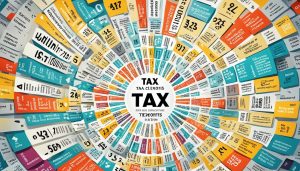
Regularly checking and updating your tax codes ensures that you pay the correct amount of tax and maintain compliance with HMRC regulations. By staying proactive and vigilant, you can avoid potential tax discrepancies and penalties.
Common Mistakes and Errors in Self Employed Tax Codes
When it comes to understanding and managing self-employed tax codes, it’s important to be aware of common mistakes and errors that can occur. These mistakes can have significant implications for your tax obligations, potentially leading to penalties or inaccurate calculations. By avoiding these errors and keeping your tax codes up to date and accurate, you can ensure a smooth and compliant tax process.
1. Incorrect Tax Codes for Additional Sources of Income
One common mistake is having incorrect tax codes for additional sources of income, such as employment or pensions. It’s crucial to understand and correctly apply the tax codes related to these income streams. This can help you avoid underpaying or overpaying taxes and ensure accurate tax calculations.
2. Outdated Tax Codes
Another common error is using outdated tax codes. Tax codes can change over time due to various factors, such as updates to tax legislation or changes in personal circumstances. It’s important to regularly review your tax codes and update them if necessary. This will help you stay informed about any changes that could impact your tax liabilities.
3. Errors in Tax Calculations
Errors in tax calculations can also occur, leading to incorrect tax liabilities. These errors may result from miscalculations or incorrect information inputted during the tax filing process. To avoid these errors, it’s important to double-check all calculations and ensure that you have accurate and complete records of your income and expenses.
To minimize the risk of these common mistakes and errors, consider taking the following steps:
- Stay informed: Keep up to date with changes in tax regulations and guidance related to self-employed tax codes.
- Double-check: Review your tax codes and calculations before submitting your tax returns.
- Seek professional advice: Consider consulting a tax professional or accountant for guidance and support in managing your tax codes and obligations.
By being proactive and diligent in managing your self-employed tax codes, you can avoid potential errors and ensure compliance with HMRC regulations.
Tips for Maximizing Your Tax Savings as a Self Employed Individual
As a self-employed individual in the UK, understanding the self-employed tax code and implementing effective tax-saving strategies can help you minimize your tax liability and maximize your savings. Here are some tips to help you make the most of your tax situation:
1. Keep Thorough Records
One of the key factors in maximizing your tax savings is maintaining accurate records of your income and expenses. Deductible expenses such as office supplies, equipment, travel costs, and professional fees can help reduce your taxable income. By keeping detailed records, you can ensure that you claim all eligible deductions and minimize your tax liability.
2. Utilize Tax Reliefs and Allowances
The UK tax system provides various reliefs and allowances specifically tailored for self-employed individuals. Examples include the Annual Investment Allowance, which allows you to claim tax relief on qualifying capital expenditures, and the Trading Allowance, which provides a tax-free allowance for small-scale self-employed activities. Familiarize yourself with these reliefs and allowances to maximize your tax savings.
3. Seek Professional Advice
Consulting with a tax professional who specializes in self-employed taxation can provide valuable insights and guidance on how to optimize your tax situation. They can help you identify additional deductions, navigate complex tax rules, and ensure compliance with HMRC regulations. A tax professional can also help you stay up to date with any changes in the self-employed tax code and make informed decisions about your finances.
4. Use Online Tax Tools and Calculators
Online tax tools and calculators can be valuable resources for self-employed individuals. These tools can help you estimate your tax liability, calculate deductions, and provide a clear picture of your tax situation. By leveraging these technology-driven resources, you can make informed decisions and maximize your potential tax savings.
Plan for Future Tax Obligations
Planning for future tax obligations is essential for self-employed individuals. Setting aside a portion of your income throughout the year can help you ensure that you have enough funds to pay your taxes when they are due. By staying organized and proactive, you can avoid late payment penalties and maintain financial stability.
By implementing these tips and staying informed about the self-employed tax code in the UK, you can take control of your tax situation and maximize your tax savings as a self-employed individual.
How to Calculate and Pay Your Taxes as a Self Employed Individual?
As a self-employed individual, it is your responsibility to accurately calculate and pay your taxes using the Self Assessment system. Keeping meticulous records of your income, expenses, and invoices throughout the year is essential. By completing your Self Assessment tax returns on time and paying your taxes based on the calculations provided by HMRC, you can ensure that you fulfill your tax obligations.
While navigating the self-employed tax code may seem daunting, you can simplify the process by consulting a tax professional or using online tax tools and calculators. These resources can help you accurately calculate your tax liability and ensure timely payments.
Remember, staying organized and proactive is vital when it comes to managing your taxes as a self-employed individual. By maintaining accurate records, understanding your tax obligations, and seeking guidance when needed, you can confidently navigate the self-employed tax code and fulfill your tax responsibilities.
Conclusion
In conclusion, understanding the self-employed tax code is paramount for navigating the UK’s tax landscape as a self-employed individual. While there isn’t a specific tax code for self-employment income, managing taxes through the Self Assessment system is crucial. Registering for Self Assessment, staying updated on tax rates and allowances, and utilizing available resources like online calculators and professional advice are key steps towards accurate tax compliance. By keeping thorough records, maximizing tax savings, and ensuring timely payments, self-employed individuals can effectively manage their tax obligations and optimize their financial situatio












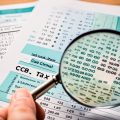
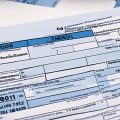

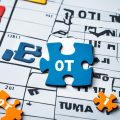
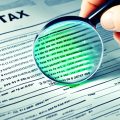
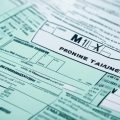


No Comments
Leave a comment Cancel